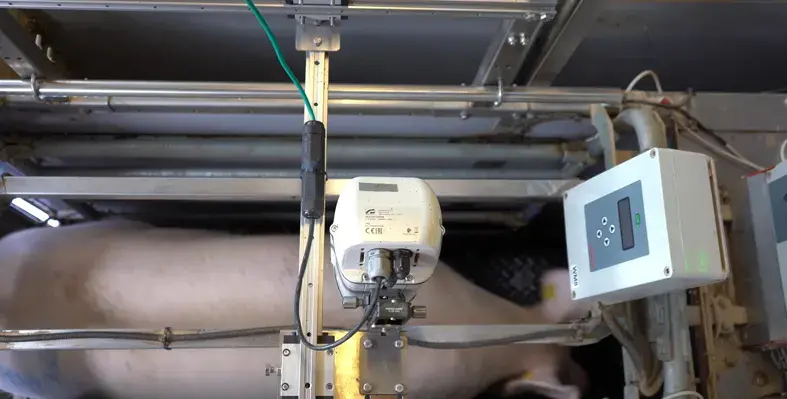
Henri Hekman, CEO of AgroCares (left) and Casper Niesink, Director Global Solutions and Services at Trouw Nutrition. (Image source: AgroCares)
AgroCares and Trouw Nutrition have announced the renewal of their NutriOpt On-site Adviser agreement, aiming to provide real-time, comprehensive nutritional insights that can directly benefit farms’ and feed mills’ operational efficiencies, economics and sustainability efforts
Combining Trouw Nutrition’s institutional knowledge and nutrient database with AgroCares’ proprietary portable NIR scanner technology, the partnership aims to provide real-time, comprehensive nutritional insights that can directly benefit farms’ and feed mills’ operational efficiencies, economics and sustainability efforts.
Leveraging Trouw Nutrition’s extensive nutrient knowledge and database, the NutriOpt On-Site Adviser can assess raw ingredients and finished feed for a specific species in less than five minutes. Species-specific nutrients are available for swine, ruminants, and poultry. New hardware developed and manufactured by AgroCares empowers farmers and feed producers to apply the nutrient profile of raw materials, silages and complete feed to make species-specific decisions.
Trusted by thousands of farmers and feed producers worldwide, the NutriOpt On-site Adviser helps producers meet market demands, such as information on the environmental footprint of food production. Henri Hekman, CEO of AgroCares, remarked that the technology draws on the innate strengths and market leadership of each partner.
The renewed contractual agreement reflects both partners’ commitment to make the equipment and nutritional data insights available to even more businesses worldwide. Ultimately, the collaboration aims to accelerate feed management, feed efficiency, sustainability and farm profitability for users, while aligning with both partners’ continued ambitions to invest in innovation and sustainability.
“We are excited to continue our partnership with AgroCares, whose technology has been instrumental in delivering the precision and reliability our customers expect. Our joint efforts have already made significant impacts in the industry to date, and we are committed to driving further innovations that benefit both our customers and the planet,” stated Hekman. “We are convinced that our species focused knowledge/ingredient profile offers the opportunity to further boost precision nutrition.”
NutriOpt Technologies was also one of the exhibitors at EuroTier 2024 which took place from 12-15 November in Hanover, Germany.








